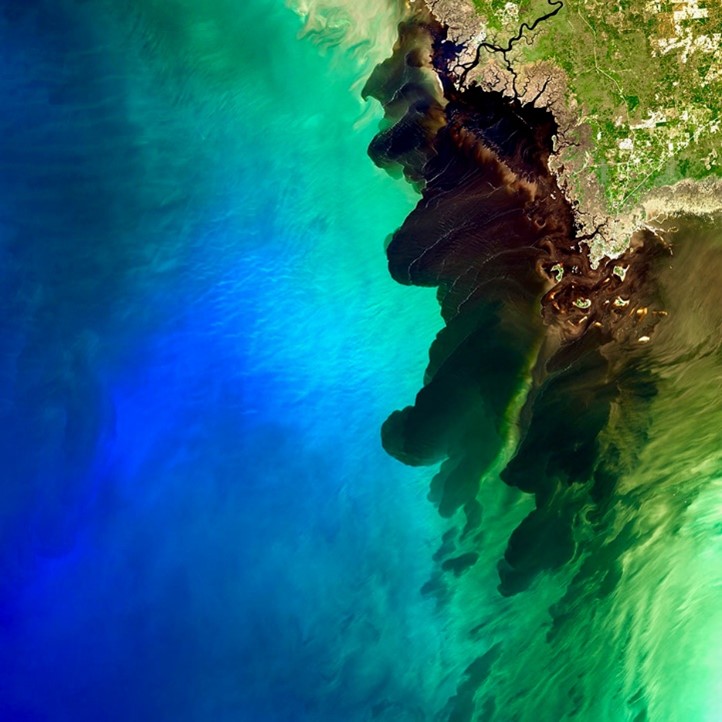Hartmann, A. C.; Sandin, S. A.; Chamberland, V. F., Marhaver, K. L.; de Goeij, J. M.; Vermeij, M. J. A. Crude oil contamination interrupts settlement of coral larvae after direct exposure ends. Marine Ecology Progress Series 536: 163-173, 2015. doi: 10.3354/meps11437
Why we care
An image search for “legacy” brings up all sorts of inspirational quotes on soft nature backgrounds: “leave a legacy worth sharing!” This is often the last thing an ecologist wants, however. In ecology, a “legacy” refers to any lasting or future effects of a human-caused disturbance. So, for example, overfishing may mean an immediate shortage of fish. The legacy of that overfishing could be altered fish population structure in the future.
Legacy effects complicate things for scientists- they make it more difficult to predict and understand human impacts. So the better we understand legacy effects, the better we can protect from and restore after a human disturbance. This paper documents a lingering effect of an oil spill on corals and what this means for coral reefs after an oil spill has been cleaned up.
Methods

On August 16, 2012, oil was spilled into the ocean on the southern side of the Caribbean island of Curacao. Oil contacted approximately 2.5 km of shoreline, including nearshore reefs and a large bay. Cleanup was concluded in early September that year.
The authors collected 2 species of coral larvae upcurrent of the oil spill, where all collected individuals could be assumed to be pristine. Agaricia humilis and Orbicella faveolata larvae were then used in two experiments that tested larval response to oil exposure. Larvae were exposed to seawater collected at the end of oil cleanup efforts from 3 sites within the spill zone and 3 sites unaffected by the spill. They were also grown in artificially contaminated seawater; the authors used oil collected from the facility responsible for the spill to create simulate contamination at known concentrations. Larval survival and settlement were quantified for 10 days in pristine seawater following their exposure to the treatments in these experiments.
Results
Orbicella faveolata larvae survival was reduced by 10% during exposure to seawater collected from within the spill zone compared to larvae exposed to seawater collected from unaffected sites. 10 days after being moved to non-contaminated seawater, survival of O. faveolata from contaminated water was 25% less than that of larvae exposed to pristine water. O. faveolata exposed to artificially contaminated seawater exhibited a similar response: survival was most negatively impacted after rather than during exposure and these survival reductions were larger with increased oil concentrations.

Agaricia humilis larvae showed no response to oil exposure during either of the two experiments. However, like O. faveolata, A. humilis survival was reduced after exposure to artificially contaminated water ended. Survival decreased with increasing oil concentrations.
Settlement was also reduced by 85% and 40% for O. faveolata and A. humilis, respectively, following exposure to water collected from the spill zone. Both larvae also had reduced settlement following contact with artificially contaminated water.
These experiments showed that the legacy effects of exposure to seawater contaminated with hydrocarbons from a crude oil spill dramatically outweigh those seen during exposure. These negative impacts are compounded by the fact that these are early life stages for these corals. In other words, legacy effects that reduce coral larvae survival and settlement may lead to reduced abundances of adult corals. It is also worth emphasizing here that the water used in these experiments was collected 3 weeks after the spill, right at the end of the cleanup effort, so responses of corals in the field are expected to be more severe.
This study shows that when measuring the effects of a disturbance like an oil spill, post-disturbance responses must be considered to truly understand environmental impact. Sub-adult life stages should also be included in any evaluation because they will influence future ecosystem health.
It’s difficult to evaluate legacy effects. Studies like this one help us know what to expect and how to assess the environment after a disturbance, which may help us reduce our impact.
Have your say
What legacy effects have you seen in the environment you live or play in? Let me know in the comments!
I just finished my graduate education in the Odum School of Ecology at the University of Georgia. I received my Ph.D. in Ecology in August 2014. My dissertation is all about the creatures that make the habitat for an ecosystem just by growing themselves. I’ve done my research in mangroves; trees that live at the edge of the ocean in the tropics. Before coming to UGA, I earned my B.S. in Biology from the University of North Carolina at Chapel Hill, where I worked on a variety of marine ecology projects.

